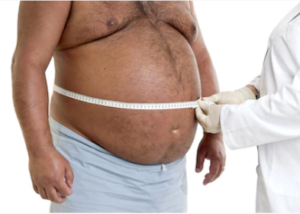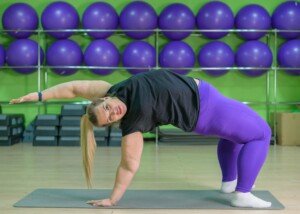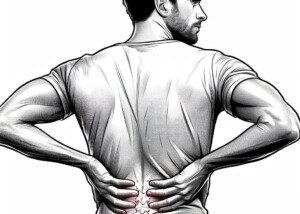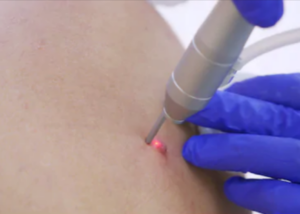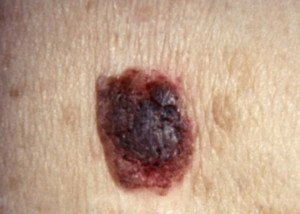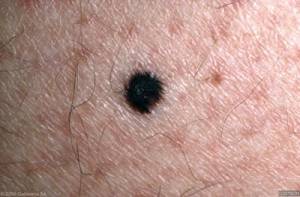Why Are Kids’ Toys that Mimic Adult’s Tools Brightly Colored?
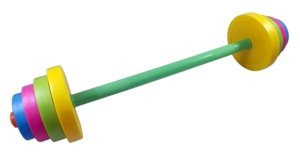
Even plastic toy barbells are bright red, green, purple and yellow!
Toy shovels, brooms, stoves and trucks are red, blue, purple, green and yellow, yet are somehow supposed to make the young child feel as though they are doing things “just like a grownup.” (more…)
Why Intuitive Eating Can Make You Gain Fat Weight

Beware of “intuitive eating,” despite its funky sounding name; it could make you gain FAT weight. Intuitive eating is essentially a free-for-all when it comes to food.
Tenets of Intuitive Eating
- No foods are forbidden.
- Don’t eat for emotional reasons.
- Eat when hungry, stop when satiation starts kicking in.
- Eat foods you love and that make you feel good.
- Rules and restrictions, structure and plans, are out.
The term “intuitive eating,” I gather, is part of its appeal. I wonder if it would have caught on with a name like “no-rule eating” or “no-plan eating.”
No Rules, No Restrictions
What the heck is wrong with rules, regulations and premeditation when it comes to eating?
Intuitive eating has no place in a modern-day culture where pastry shops, fast-food diners and all sorts of other eateries are on every street corner.
The tenet of “don’t eat for emotional reasons” is the only sensible one.
No Foods Are Forbidden, Eat Foods You Love and that Make You Feel Good
We shouldn’t give up our favorite foods. But if we ate them intuitively rather than mindfully, how many of you would eventually get as big as a horse?
For many overeaters, psychological issues drive this behavior. They may eat out of depression, stress, loneliness, boredom or based on social cues such as dinner out, parties and social functions.
This is dangerous advice for an obese or overweight person who’s an emotional or situational eater, even though one of the tenets is to avoid emotional eating.
Plus, the tenet of avoiding emotional eating contradicts the one about eating foods that make you feel good.
It’s like telling an alcoholic, “Drink the beverages you love and that make you feel good.”
Can you imagine a doctor applying this concept to smoking? “Go ahead, smoke whenever you feel like it as long as it makes you feel good.”
Is there anyone out there who gets the same “feel good” feeling from steamed vegetables as they do from ice cream, fast-food or munchies?

Shutterstock/Viktoriia Hnatiuk
Eat when Hungry; Stop when Satiation Kicks In
What if you used hunger to guide you rather than the clock, physical activity or some other predetermined structure?
Some people are hungry quite often.
This problem can’t always be corrected by increasing water and protein intake and eating less processed food.
It’s just that for some people, it takes a lot of food to subdue their hunger.
If it takes 1,000 calories of pasta in one sitting to do this, should they do it?
Yes, according to the intuitive eating approach.
For some obese overeaters, hunger is a constant problem, as their hunger signals may be out-of-whack. For instance they may be leptin resistant, causing excess hunger.
Do fresh vegetables and fruits have a place in intuitive eating?

According to intuitive eating, vegetables and fruits will never get eaten — unless you find peas and apple slices to be comfort foods or find them as heavenly tasteful as a milkshake or cinnamon roll.
If ALL food had the same nutrient and caloric value (e.g., a brownie was identical in nutrients and calories to a cup of spinach), who’d choose the spinach over the brownie?
Okay, maybe you don’t love brownies. What DO you love? Maybe it’s butterscotch candies.
Maybe it’s M & M’s. Maybe it’s Mickey D’s fries or Applebee’s bacon cheeseburgers.
If these unhealthy sugary and fatty foods were as low in calories as carrots and as health-giving, would you ever eat carrots again? No way. You’d be filling up on the “bad” stuff.
Because it just tastes SOOOOO good! And the texture! Can broccoli match the textural sensation of pudding, mousse, ice cream or chocolate cake drenched in warm chocolate syrup?

Would you be staring at this image like you would if it were a plate of raw vegetables? Yeah, right. Shutterstock/Africa Studio

Though this is an attractive shot of health-giving raw vegetables, let’s admit it: You’re not staring at this the same way you were looking at the cake above! Shutterstock/giedre vaitekune
Weight Gain from Intuitive Eating
I once decided to eat intuitively. I gained weight because all I was eating was high calorie, fattening foods (bread, baked goods) and hardly any vegetables or fruits.
Only when I apply those forbidden rules and regulations to my eating habits do my triglycerides go down to an amazing 39, and my baseline blood pressure gets in the 90s over 60s. And my body becomes lean.
Sure, I allow myself cheesecake and homemade chocolate milkshakes – but not intuitively. It’s mindfully. There IS a difference.
I can eat an entire loaf in a single sitting of my mother’s legendary homemade bread (intuitive approach). But I stop after a few thick slices. Any problem with that?
There is NOTHING wrong with applying rules, regs and structure to your eating habits and not eating every time you’re hungry.
Intuitive banking, anyone? How about intuitive parenting? I thought so.
Imagine how destructive it would be if you applied the intuitive approach to other components of your life, such as dating.
If you as a woman were to practice “intuitive dating,” you might end up taking rides from men you just met at a bar – men disguising their danger with good looks and superficial charm.
If men were to practice intuitive dating, they might end up with eye-candy shallow women who want only their money.
What about intuitive money management? Let’s not even go there. Want to go near intuitive parenting? I didn’t think so.
Intuitive Eating Encourages Overeating Junk Food

So many formerly obese people report that they had no idea how much they’d been overeating until they began breaking the rules of intuitive eating (e.g., tracking calories).
The standard American diet is heart-harmful and triggers hunger. Like one personal trainer, whose many clients are morbidly obese, has stated: “People intuitively eat like shit.”
Intuitive eating translates to listening to the voice inside your head urging you to polish off those three donuts sitting on your counter.
What next, intuitive shopping? Hello credit card debt!
Intuitive Eating Is a Marketing Scheme
Not only is this concept something that those who’ve failed at healthy eating want to hear, but the funky term also appeals to some non-overweight health professionals.
“I’m all for intuitive eating!” a dietician expert source for a few of my nutrition articles once told me.
Yet her advice that I used for my articles breached the rules of intuitive eating!
Don’t Be Led Astray
- There is no crime in having to strictly surveil eating habits!
- There is no crime in using apps or whatever method suits you to track calories and fat grams.
Intuitive Housecleaning
Screw intuitive eating. It makes no sense. No more sense than it would to apply it to maintaining your house.
Imagine practicing intuitive household management. The laundry would never get done, dishes never cleaned, toilet bowl never cleaned, beds never made…
 Lorra Garrick is a former personal trainer certified through the American Council on Exercise. At Bally Total Fitness she trained women and men of all ages for fat loss, muscle building, fitness and improved health.
Lorra Garrick is a former personal trainer certified through the American Council on Exercise. At Bally Total Fitness she trained women and men of all ages for fat loss, muscle building, fitness and improved health.
.
Top image: ©Lorra Garrick
Metabolic Healthy Obese vs. Metabolic Healthy Normal Weight
Why do metabolic healthy obese people keep comparing themselves to “unhealthy thin” people when they should be comparing themselves to metabolically healthy THIN or straight-size people?
“In this situation, one should compare oneself to the best ideal, not to another version of poor health,” says Susan L. Besser, MD, with Mercy Medical Center, Baltimore; Diplomate, American Board of Obesity Medicine and board certified by the American Board of Family Medicine.
“The dangers of overweight and health worsen over time, so a ‘metabolically healthy’ obese patient eventually likely will develop issues.
“Of course, that doesn’t mean thin people are metabolically healthy either. They can have their own health issues.”
Large-Scale Study Says what Medical Professionals and Fitness Enthusiasts Have Been Saying All Along.
To put it succinctly, fat and healthy is still a lot worse than thin and healthy.
For the purposes of this article, “thin” refers to a medically acceptable body-fat percentage that creates a lean or proportional look in a person. This is also known as straight-size.
Study Results No Shock
Dr. Rishi Caleyachetty et al from the Institute of Applied Health Research, College of Medical and Dental Sciences, the University of Birmingham, UK, conducted a study with some not-so-surprising results.
Good metabolic health basically means that a person’s blood lipids, blood pressure and blood sugar levels are normal.
The “fat and healthy” camp, however, often dismisses this definition and uses “healthy” in a much broader sense.
You CAN be fat with good cholesterol numbers, low blood pressure and normal blood sugar.
But what about OTHER problems that obesity is notoriously linked to, such as some cancers, osteoarthritis in the knees, chronic back pain, tiring quickly, increased rate of complications while giving birth and mobility problems?
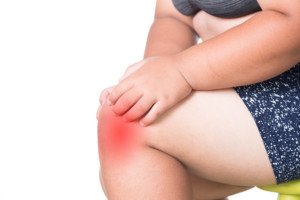
Shutterstock/narikan
Metabolic health has nothing to do with these other obesity-linked issues.
Can a “metabolically obese” person still be at higher risk of cardiovascular disease than metabolically thin people?
YES.
For the study, the primary care health records of metabolically healthy obese patients and their thinner counterparts were analyzed — for the period 1995-2015.
The records came from a large UK database called The Health Improvement Network and consisted of 3.5 million adults who were initially free of cardiovascular disease.
The patients were divided into groups according to body mass index and the absence or presence of three metabolic abnormalities (high blood pressure, high blood fats and diabetes).
A metabolic score ranging from zero to 3 was then constructed. Metabolic healthy obesity (MHO) meant zero abnormalities.
Four Cardiovascular Conditions
• Heart disease
• Cerebrovascular disease (which can lead to stroke)
• Congestive/chronic heart failure
• Peripheral vascular disease
Is the risk of these four conditions greater in people with MHO than in metabolically healthy thin patients?
• People with MHO has a 50 percent bigger risk for heart disease.
• Seven percent increased risk for cerebrovascular disease
• Doubled risk for CHF
• The presence or absence of smoking was adjusted for, too.
• When smoking was excluded from the equation, MHO patients had an 11 percent higher risk for PVD.
You may think that seven, “doubled” and 11 are too small to count, but from a population statistical standpoint, these figures are significant.
An increased number of metabolic abnormalities meant a higher risk of CVD conditions. A score of 3 meant the highest risk for all the conditions:
• 2.6 times higher risk of heart disease
• 58 percent greater risk for CVD
• 3.8 times higher risk for heart failure
• 2.2 times greater risk for PVD
In a nutshell, so-called metabolically healthy obese adults are at greater risk of coronary artery disease, chronic heart failure and cerebrovascular disease than are thin metabolically healthy people.
 Dr. Besser provides comprehensive family care, treating common and acute primary conditions like diabetes and hypertension. Her ongoing approach allows her the opportunity to provide accurate and critical diagnoses of more complex conditions and disorders.
Dr. Besser provides comprehensive family care, treating common and acute primary conditions like diabetes and hypertension. Her ongoing approach allows her the opportunity to provide accurate and critical diagnoses of more complex conditions and disorders.
 Lorra Garrick has been covering medical, fitness and cybersecurity topics for many years, having written thousands of articles for print magazines and websites, including as a ghostwriter. She’s also a former ACE-certified personal trainer.
Lorra Garrick has been covering medical, fitness and cybersecurity topics for many years, having written thousands of articles for print magazines and websites, including as a ghostwriter. She’s also a former ACE-certified personal trainer.
.
Source: sciencedaily.com/releases/2017/05/170516190739.htm
Do Heavy Deadlifts Prevent a Sore Low Back from Yoga?
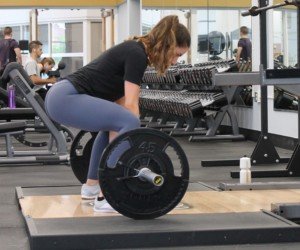
If you’re an animal with deadlifts, don’t think for a second that a single class of yoga won’t give you a sore back after the class or the day after.
There are different ways that physical fitness can be expressed, and deadlifting a lot of weight is one of them.
After all, the action of bending down to lift something heavy off the ground is one of the most fundamental movements of the human body, occurring quite frequently in the average person’s life, involving a connection between the upper and the lower body. (more…)
Can You Prevent Knee Replacement Surgery with Exercise, Diet?
How many of the 600,000 knee replacements every year in the U.S. can be prevented with diet and exercise?
Or are some people genetically doomed, as many would like to believe? (more…)
Why a Primary Melanoma Sometimes Can’t Be Found?

A person is diagnosed with metastatic melanoma but the original “bad mole” cannot be found; why IS this?
It’s crucial to find that primary melanoma tumor so that it can be surgically excised. (more…)
Is a Malignant Melanoma Different than just “Melanoma”?

“Malignant melanoma” vs. “melanoma.”
Is there actually a difference in meaning when someone says malignant melanoma as opposed to just “melanoma”? (more…)
How Fast Can a Seborrheic Keratosis Grow?

The sometimes rapidly changing growth of a seborrheic keratosis can fool people into thinking they have a melanoma.
But not all seborrheic keratoses grow quickly. (more…)
Can Melanoma Be Perfectly Round, Symmetrical, One Color?
Okay, we all know that “black and ugly” describes melanoma, and online images show melanoma to be evil-looking, dark, jagged, bumpy, the whole works.
But we must also consider that often, by the time a melanoma is photographed by a dermatologist, it’s at a later stage of development.
Who spots a tiny innocent-looking dot, says to their doctor, “I’ve never seen this before,” and the doctor decides to take a photo of it before excising it?
What more likely happens is that when what obviously appears to be a melanoma, with classic features, is presented to a dermatologist, the doctor THEN takes the photo. And it ends up online—looking mighty nasty.

Note that the dark pink melanoma in the lower left is quite round, symmetrical and all the same color.
In actuality, not all melanomas—by the time they’re diagnosed—are scary looking or have any of the classic features such as jagged edges and bumpy portions.
This one here below is relatively symmetrical, and keep in mind that it’s magnified — which accentuates asymmetry in any lesion.
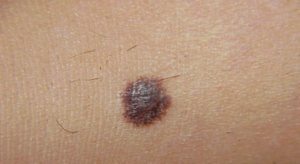
Melanoma Has to Start Somewhere
And it can start as a tiny sane-looking dot. A melanoma doesn’t go from nothing to a pencil-eraser-sized purple and black cobbled spot overnight.
“Not all melanomas begin as the typical funny looking or sinister lesion,” says Sharyn Laughlin, MD, board certified dermatologist and co-founder of the DermaEnvy Skincare ™ line of sun protection products and medical director of Laserderm, a pioneering laser skin surgery clinic in Ottawa, Ontario, Canada.
“Some start out as a very small, innocent looking, pale, pink or black spot or nodule that will over time change in size — a vertical growth rather than the typical spreading lesion.
“Some resemble a skin tag or a seborrheic keratosis. If the patient says this is new – take them at their word regardless of what it looks like and follow it with photographs or biopsy it immediately.
“This is where the experienced dermatologist exercises intuition – call it a ‘gut feeling’ and usually does the right thing.
“My philosophy is simply to biopsy it if any uncertainty persists after looking at the lesion and using my dermatoscope to see it under magnification.
“Then neither you nor the patient need lose sleep or worry. The pathologist gives you the definitive diagnosis.
“The downside — the patient ends up with a small scar, which in my hands using my CO2 laser to deal with the excision base, is practically invisible.”
A melanoma’s only distinguishing feature may simply be an increase in size over several months, even though the color, symmetry and border remain the same. When it doubt, have it checked out.
 In practice for 30+ years, Dr. Laughlin has been lead or co-investigator in many research trials and an innovator in developing new laser technology. dermaenvy.com.
In practice for 30+ years, Dr. Laughlin has been lead or co-investigator in many research trials and an innovator in developing new laser technology. dermaenvy.com.
 Lorra Garrick has been covering medical, fitness and cybersecurity topics for many years, having written thousands of articles for print magazines and websites, including as a ghostwriter. She’s also a former ACE-certified personal trainer.
Lorra Garrick has been covering medical, fitness and cybersecurity topics for many years, having written thousands of articles for print magazines and websites, including as a ghostwriter. She’s also a former ACE-certified personal trainer.
.
Top image: pcds.org.uk/clinical-guidance/melanoma-an-overview1
Can a New Melanoma Start Out Looking Like a Blackhead?

Unfortunately, among all those blackheads on your nose, chin or cheeks could be a very early melanoma slyly blending in and going unnoticed.
If the new “blackhead” begins developing in an isolated area on your face, away from other blackheads, it’s more likely to be noticed and then surveilled.
Melanoma “can start as a small black dot that to an untrained eye could resemble a blackhead,” says Sharyn Laughlin, MD, board certified dermatologist and co-founder of the DermaEnvy Skincare ™ line of sun protection products and medical director of Laserderm, a pioneering laser skin surgery clinic in Ottawa, Ontario, Canada.
“It will not yield to squeezing — since most people cannot resist squeezing. This black dot will evolve and change along the ABCDE rules on melanoma.”

Melanoma. CDC, Carl Washington, MD, Emory Univ. School of Medicine, Mona Saraiya, MD, MPH
Blackheads, as you surely already know, don’t visibly progress beyond the appearance of a tiny black dot.
A melanoma in their midst will, over time, begin to stand out as it grows.
This doesn’t mean you should obsessively inspect every blackhead on your face.
But keep an eye on any that stand out, such as a new tiny dot that’s not part of your usual cluster of blackheads.
ABCDE Melanoma Rules
The new little black dot isn’t necessarily melanoma if it’s not a blackhead.
It could be the beginning of an age spot or lentigo, a seborrheic keratosis, a clogged pore or a new benign mole – even if you’re middle aged or older.
New spots or “blackheads” that look like moles, however, should be examined by a dermatologist.
Chances are they’re benign, but a new spot in middle age is more likely to be a melanoma when compared to new moles in young adulthood.
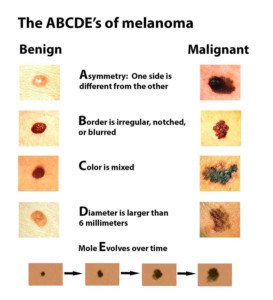
 In practice for 30+ years, Dr. Laughlin has been lead or co-investigator in many research trials and an innovator in developing new laser technology. dermaenvy.com.
In practice for 30+ years, Dr. Laughlin has been lead or co-investigator in many research trials and an innovator in developing new laser technology. dermaenvy.com.
 Lorra Garrick has been covering medical, fitness and cybersecurity topics for many years, having written thousands of articles for print magazines and websites, including as a ghostwriter. She’s also a former ACE-certified personal trainer.
Lorra Garrick has been covering medical, fitness and cybersecurity topics for many years, having written thousands of articles for print magazines and websites, including as a ghostwriter. She’s also a former ACE-certified personal trainer.
.








